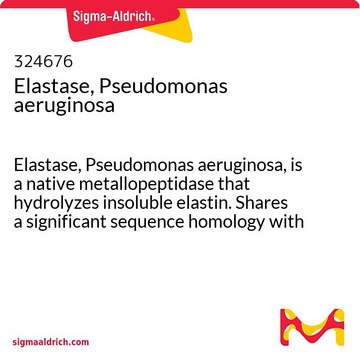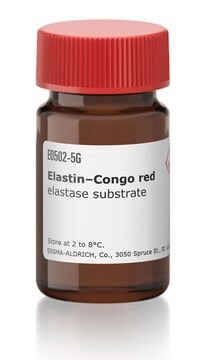E1250
Elastase from porcine pancreas
Type I, ≥4.0 units/mg protein
Synonym(s):
Elastase from hog pancreas, Pancreatopeptidase E
About This Item
Recommended Products
biological source
Porcine pancreas
type
Type I
form
suspension
specific activity
≥4.0 units/mg protein
mol wt
25.9 kDa
contains
0.1% thymol
concentration
0.5-15.0 mg/mL in water
foreign activity
trypsin ≤50 BAEE units/mg protein
storage temp.
2-8°C
Looking for similar products? Visit Product Comparison Guide
Related Categories
Application
- to induce abdominal aortic aneurysm (AAA)
- to study the impact of indoleamine 2-3 dioxygenase 1 (IDO) in mice
- to digest aortas for aortic smooth muscle cells (SMC) isolation
- as a positive control of proteolytic digestion
Biochem/physiol Actions
Packaging
Unit Definition
Preparation Note
Application
Inhibitor
signalword
Danger
hcodes
Hazard Classifications
Eye Irrit. 2 - Resp. Sens. 1 - Skin Irrit. 2 - STOT SE 3
target_organs
Respiratory system
Storage Class
11 - Combustible Solids
wgk_germany
WGK 3
flash_point_f
Not applicable
flash_point_c
Not applicable
ppe
dust mask type N95 (US), Eyeshields, Faceshields, Gloves
Choose from one of the most recent versions:
Already Own This Product?
Find documentation for the products that you have recently purchased in the Document Library.
Customers Also Viewed
Chromatograms
application for HPLCOur team of scientists has experience in all areas of research including Life Science, Material Science, Chemical Synthesis, Chromatography, Analytical and many others.
Contact Technical Service
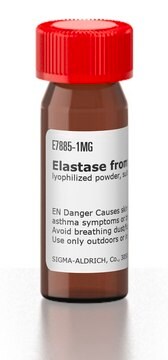
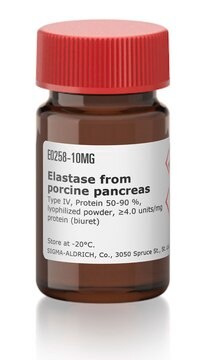


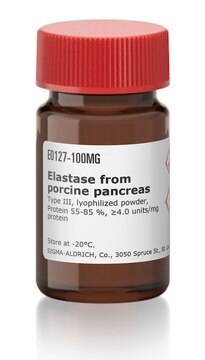
![N-[3-(2-Furyl)acryloyl]-Leu-Gly-Pro-Ala](/deepweb/assets/sigmaaldrich/product/structures/805/876/96b5fb57-71c8-4c6b-b5d2-fafe7374cd85/640/96b5fb57-71c8-4c6b-b5d2-fafe7374cd85.png)






